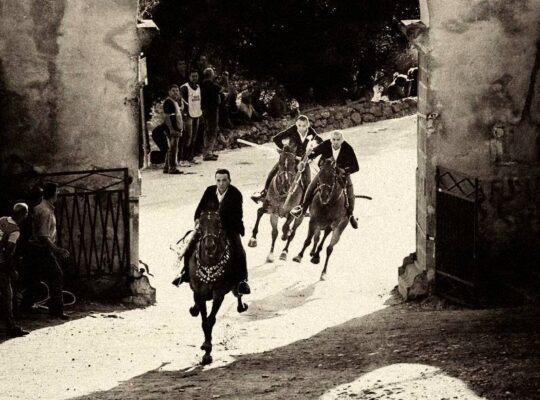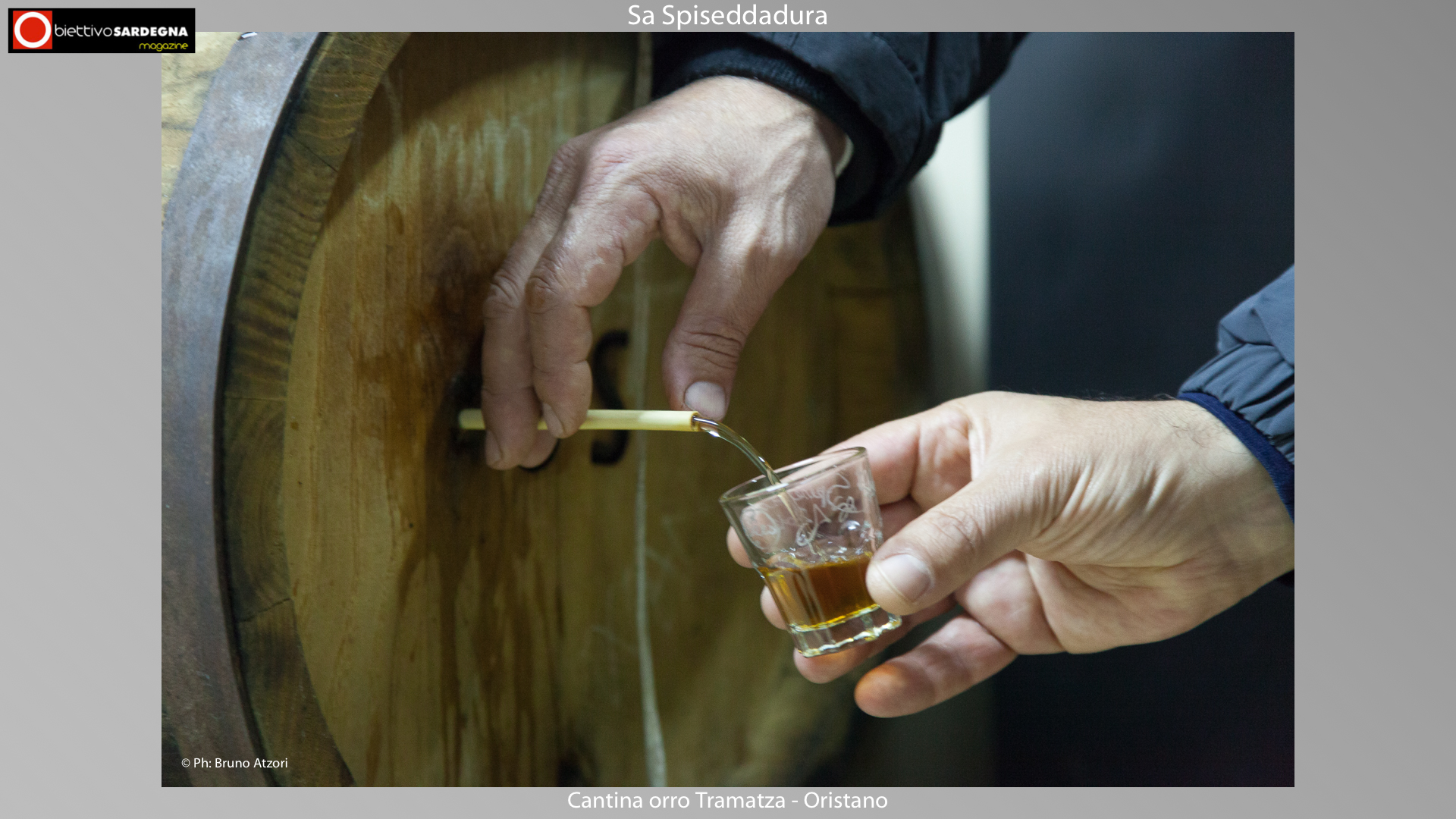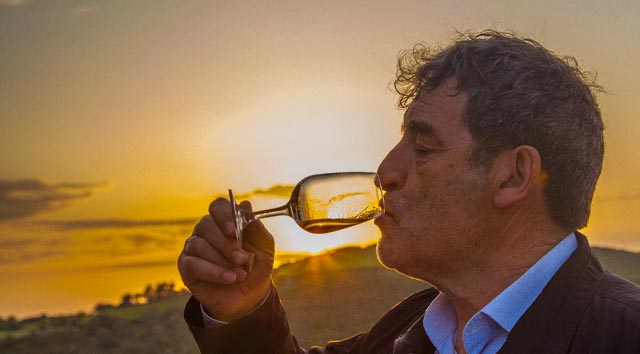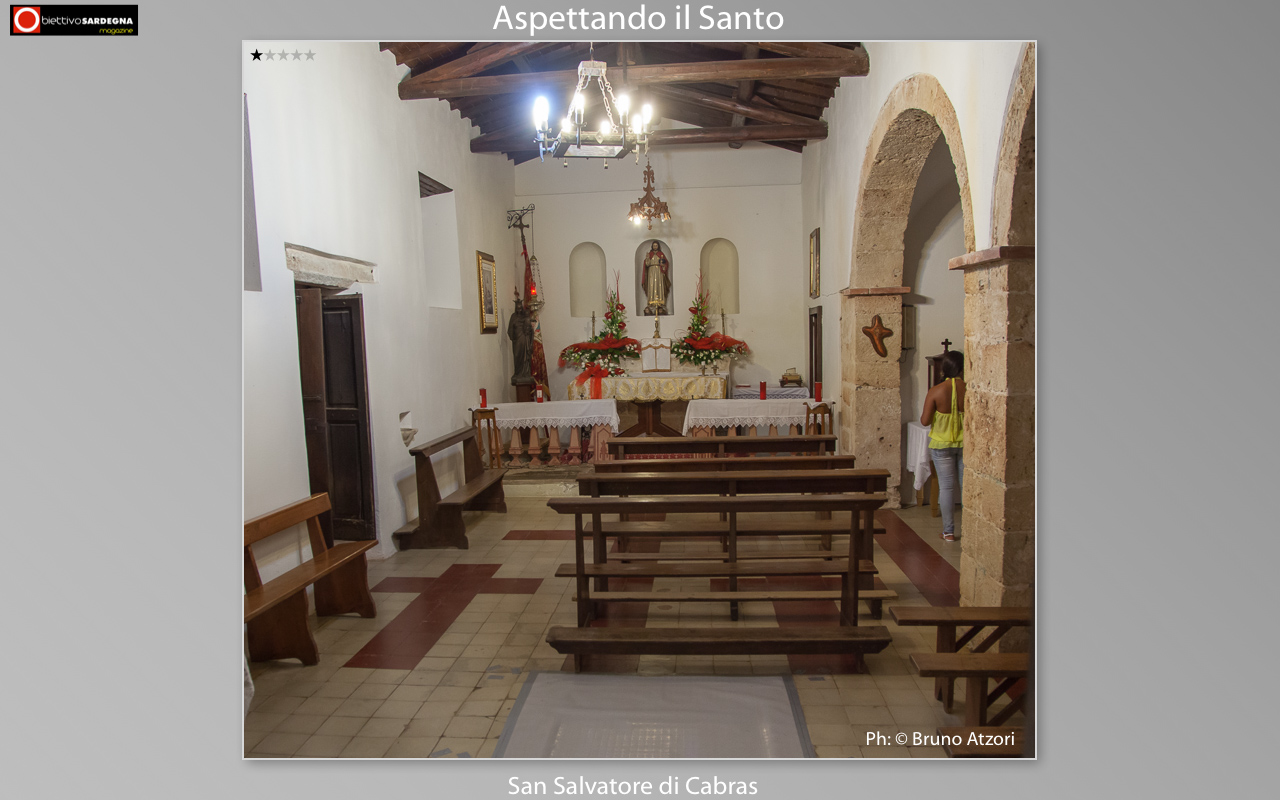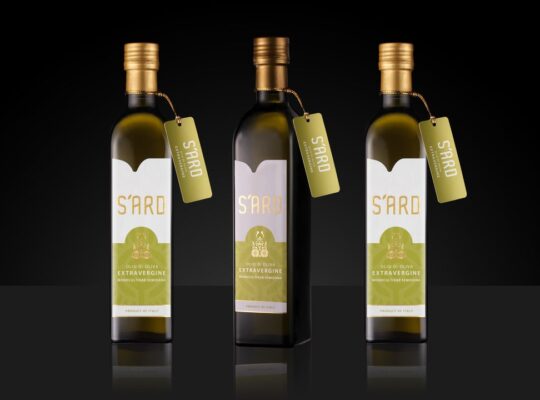
Ci scusiamo con i lettori per non aver utilizzato immagini e servizi della Sartiglia 2011, a causa del ritiro degli accrediti stampa, da parte dell’organizzazione della “Fondazione Sartiglia”
PROGRAMMA / PROGRAM 6/8 marzo 2011
Ore 12.00 Cerimonia della vestizione del capo corsa “su Componidore” che si svolge, la Domenica, presso la sede del Gremio dei Contadini, in via Aristana, e il Martedì presso la sede scelta, di anno in anno, dal Gremio dei Falegnami. La cerimonia è ad invito, ma con un po’ di fortuna…
Investiture Ceremony of the head race “Su Componidori” that develops, on Sunday, in the house of Gremio of Farmers, in Aristana street, and on Tuesday in the house chosen, year by year, from the Gremio of Carpenters. The ceremony is to invitation, but with a little bit of fortune…
Ore 14.00 Corsa alla stella “Sa Sartiglia” in via Duomo.
Race to the star “Sa Sartiglia” in Duomo street.
Ore 16.30 Corsa alle Pariglie in via Mazzini.
Race to the Pariglie in Mazzini street.
Is an equestrian masked ride, of clear chivalric origin, that develops in Oristano, since 1500, on Sunday and Tuesday of carnival. A demonstration rich in charm and symbolism related to the worship of the earth. The most important figure is the mask of “Su Componidori”, the head race: he’s him who decides the rhythms and the times of the ride, which and how many riders will launch themselves in the “climb-down to the star” in an unrestrained gallop, with the sword drawn to center the tiny hole of a star hanged to a green band tense between two trees, along the path.
Head race and at the same time symbolic pagan god, masculine strength and female fertility together, able to control the rhythms of the seasons, the course of the harvests and the crops. Still today from the result of the run, from how many stars “taken”, the auspices of good or bad year are drawn.
Handed down until today in the full respect of the tradition from the two Gremi, the one of Saint Giovanni for the farmers (Sartiglia of Sunday) and the one of Saint Giuseppe for the carpenters (Sartiglia of Tuesday), both the singulars coordinators and tutor of the manifestation. Among the historical documents, a legacy of the canonical Dessì destined in 1500 the income of some fields to sustain the race’s costs, income still used today.

All is developed according to a ritual respected in details: “majorales” of each Gremio choose the respective Componidori of the two races. The selected runner will receive the investiture in the day of Candelora, on February the 2nd, an intimate ceremony that involves the Gremio and the family of the rider.
From that day the preparations are fervent in a climate of great joy and tension.
The investiture is a long and complex ritual. It doesn’t have the only function to dress the Componidori, but also the deeper to turn him or her from a man into god through precise rhythms and times, articulated by the roll of the drums, from the touched silence of the people and from applauses and toasts.

The rider climbs on a table, sits on a chair and he’s welcomed from sa massaia manna and sas massaieddas, young girls in traditional Oristano’s clothes that, on her experienced guide, will dress, sew, tie laces, handkerchiefs and ribbons. From this moment the rider cannot put anymore “foot on the ground”. When the ancient mask cover her face the ritual is completed, the transformation is done. All the gestures are fast and agitated, the drums roll, then, in a total silence, the horse is brought inside, to the Componidori is delivered the “scepter” sa pippia ‘e maiu”, he slowly climbs on the horse and while he’s brought outside he begins to bless the crowd with his scepter of violets.
While the investiture develops, outside the masked riders arrive and with their horses harnessed to hundreds of rosettes lovingly prepared by the women: sisters, girlfriends, wives, mothers that for months have curled kilometers of colored ribbons, sewn on round cardboard bases.
The Procession is open from young people with the beautiful traditional clothes of Oristano, from the “court of Eleonora” dressed in precious medieval clothes that surrounds the heroine who climbs on to the horsewoman a beautiful horse held by the pages. Follow the drummers and the trumpeters that precede the procession of the riders in Pariglia, opened from Su Componidori placed side by side from “su secundu Cumpoi” and “su terzu Cumpoi”.
The long Procession unthreads among two wings of festive and touched crowd, crosses the narrow streets of the city centre and arrives along the path of the run to the star: from Mannu square, where the ancient castle of Arborea’s kings rosed, along Duomo street, where thounsands of persons are situated on the galleries prepared for the occasion, until Saint Antonio street.
The procession is just passed that su Componidori goes up again the path in front of the Cathedral, covered by a thick sand of river to facilitate the run of the horses.
Under the star he will cross the sword with su segundu Cumpoi, beginning the run.
Su Componidori is the first one to run and, in a rapid succession, the riders designated will follow him. The roll of the drums will accompany the descents to the unbridled gallop, with the tense sword in the difficult attempt to insert the small star perforated to the center.
A roar will explode from the crowd every time that the rider will succeed in his intent and will slowly goes up again among the applauses to redeliver the star and to receive in change a small silver star that will be pin on his breast.
Su Componidori can’t give the honor of the descent to all the riders because he wouldn’t have the necessary time and he’ll close the run to the star with a last descent, using “su stoccu” rather than the sword.
Finally su Componidori will pass along Duomo street to the unbridled gallop, to long reins, with the shoulders that will touch the backs of the horse in a descent called “sa remada”, blessing the crowd with a bunch of violets called “sa pippia ‘e maiu”.
The crowd leave the path of the run to the star, the procession reassembles and unthread along Eleonora square, Dritta street, Roma square and it reaches Mazzini street where all the riders will exhibit in the Pariglie.

They are real exhibitions of Sardinian riders’ balentia that perform acrobatic figures on two, three horses launched to the unbridled gallop.
Thought that this race has been the answer of the people of the “balenti” riders to the run to the star, of chivalrous mold and maybe reserved to the noblest riders.
The pariglie are raced along Mazzini street, from Roma square to Mariano square, where anciently the boundaries of Oristano were. We can see still the ruins of Portixedda, one of the smaller doors of the judicial city, now restored and visitable.
The light of February quickly falls on the last unbridled exhibitions of the masked riders and too soon the order of Su Componidori arrives: the run is ended, the procession is recomposed and the riders will escort their head race to the undressing, where he’s attended from the Gremio and from the crowd for long festive toasts.
The complex ritual of Sartiglia will be still repeated on Tuesday with the organization of the Gremio of carpenters: su Componidori, su segundu and su terzu will change, while the riders will be the same. Most of them will have a second chance to take the star, someone will succeed, maybe, to double the success of the Sunday deserving himself of a small gold star.
The two Gremi will do a competition to take how many more possible stars, they will challenge and at the end they will toast together and will draw the auspices for the year.
But, especially, they will keep on speaking of Sartiglia for months, in the street, in the cafes, in the offices, in the markets.
The summer will bring just a small pause and then they will come back to the “job”, to propose a rose of riders among which will be chosen su Componidori of next year, to train the horses, to train the pariglie, to prepare the new clothes, to prepare the new harness, to curl ribbons in thousands of colored rosettes.
People from Oristano deeply love this demonstration that closed with the wish “Atteros annus mellus”, that is better next year, maintaining the tradition with a festive and sincere continuity.
E’ una giostra equestre in maschera, di chiara origine cavalleresca, che si svolge a Oristano, fin dal 1500, la domenica e il martedì di carnevale. Una manifestazione ricca di fascino e di simbologie legate al culto della terra. La figura più importante è la maschera de “ su Componidori”, il capocorsa: solo lui decide i ritmi e i tempi della corsa, quali e quanti cavalieri faranno la “discesa alla stella” al galoppo sfrenato, con la spada sguainata per centrare il minuscolo foro di una stella appesa a un nastro verde teso tra due alberi, lungo il percorso.
Su Componidori, simbolico dio pagano, è forza maschile e fecondità femminile insieme, capace di controllare i ritmi delle stagioni, l’andamento delle messi e dei raccolti. Ancora oggi dall’esito della corsa, da quante stelle “prese” si traggono gli auspici di buona o cattiva annata.
Tramandata fino ad oggi nel pieno rispetto della tradizione dai due Gremi, quello di San Giovanni per i contadini (la Sartiglia della domenica) e quello di San Giuseppe per i falegnami (la Sartiglia del martedì), da sempre gli unici organizzatori e tutori della manifestazione. Tra gli unici documenti storici è un lascito del canonico Dessì che nel 1500 destinava la rendita di alcune terre per sostenere le spese della corsa, rendite utilizzate ancora oggi.
Tutto viene svolto secondo un rituale rispettato fin nei minimi particolari: i “majorales” dei Gremi scelgono i rispettivi Componidori delle due corse. Il cavaliere prescelto riceverà l’investitura ufficiale il giorno della Candelora, il 2 febbraio , con una cerimonia intima che coinvolge il Gremio e la famiglia del cavaliere.
Da quel giorno fervono i preparativi in un clima di grande gioia e tensione.
La vestizione è un rituale lungo e complesso che non ha solo la funzione di vestire il Componidori ma quella più profonda di trasformarlo da uomo in dio attraverso ritmi e tempi precisi, scanditi dal rullare dei tamburi, dal silenzio commosso della platea e da applausi e brindisi augurali.
Il cavaliere sale su un tavolo, siede su una sedia e viene accolto da sa massaia manna, responsabile della vestizione. Sotto la sua guida esperta, sas massaieddas, giovani fanciulle in costume oristanese, vestiranno, cuciranno, legheranno pizzi, fazzoletti e nastri. Da questo momento il cavaliere non potrà più mettere “piede in terra”. Quando l’antica maschera copre il suo viso il rituale è compiuto, la trasformazione è avvenuta. I gesti si fanno veloci e concitati, i tamburi rullano, poi, nel silenzio totale il cavallo viene portato nella sala della vestizione, sale lentamente sul cavallo, al Componidori viene consegnata sa pippia ‘e maiu, uno “scettro” realizzato da giunchi legati da un nastro verde, con due mazzi di violette alle estremità, con il quale inizia a benedire la folla.
Mentre si svolge la vestizione fuori arrivano pian piano i cavalieri mascherati, con i cavalli bardati a festa da centinaia di rosette preparate amorosamente dalle donne di casa: sorelle, fidanzate, mogli, mamme che per mesi hanno arricciato chilometri di nastri colorati, cuciti su basi di cartone rotonde.
Il Corteo è aperto da giovani con i bellissimi costumi di Oristano e dalla “corte di Eleonora” vestiti in ricercati costumi medioevali, circondano l’eroina oristanese che monta alla amazzone un bel cavallo tenuto dai paggi. Seguono i tamburini e i trombettieri che precedono il corteo dei cavalieri apparigliati, aperto da su Componidori affiancato da su “secundu” e su “terzu” Cumpoi.
Il lungo corteo sfila tra due ali di folla festosa e commossa, attraversa le strette strade del centro storico e arriva poco dopo lungo il percorso dove si svolgerà la corsa alla stella: da piazza Mannu, dove sorgeva l’antico castello dei re di Arborea, lungo Via Duomo, dove trovano posto migliaia di persone nelle tribune allestite per l’oc-casione fino a via S. Antonio.
Il corteo è appena passato che già su Componidori risale lentamente il percorso davanti alla Cattedrale coperto da una spessa sabbia di fiume per agevolare la corsa dei cavalli.
Sotto la stella incrocerà le spade con su segundu Compoi dando inizio alla corsa.
Su Componidori corre per primo e, in rapida successione, seguiranno i cavalieri da lui designati. Il rullo dei tamburi accompagnerà le discese al galoppo sfrenato, con la spada tesa nel difficile tentativo di infilare la piccola stella forata al centro.
Un boato esploderà dalla folla ogni volta che il cavaliere riuscirà nel suo intento e risalirà lentamente tra gli applausi per riconsegnare la stella al presidente del gremio e ricevere in cambio una piccola stella d’argento che verrà appuntata sul suo petto.
Su Componidori non potrà dare a tutti i cavalieri l’onore della discesa perché non avrebbe i tempi necessari e chiuderà la corsa alla stella con un’ultima discesa, usando su stoccu anziché la spada.
Infine su Componidori passerà nella via Duomo al galoppo sfrenato, a redini lunghe, con le spalle che toccheranno le reni del cavallo in una discesa detta sa remada, benedicendo la folla con un mazzo di violette detto sa pippia ‘e maiu.
La folla abbandona il percorso della corsa alla stella, il corteo si ricompone e sfila lungo piazza Eleonora, via dritta, piazza Roma e raggiunge via Mazzini dove tutti i cavalieri si esibiranno nelle Pariglie, vere e proprie esibizioni di balentìa dei cavalieri sardi che eseguono figure acrobatiche su due, tre cavalli lanciati al galoppo.
Si pensa che questa corsa sia stata in origine la risposta del popolo dei cavalieri balenti alla corsa alla stella, di stampo cavalleresco e forse riservata ai cavalieri più nobili.
Le pariglie si corrono lungo la via Mazzini, da Piazza Roma a Piazza Mariano, dove anticamente erano le mura di Oristano. Si possono ancora vedere i ruderi di Portixedda, una delle porte minori della città giudicale, ora restaurata e visitabile.
La luce di Febbraio cala rapidamente sulle ultime sfrenate esibizioni dei cavalieri mascherati e troppo presto arriva l’ordine de su Componidori: la corsa è finita.
Il corteo si ricompone i cavalieri accompagneranno il loro capocorsa alla svestizione, dove è atteso dal Gremio e dalla folla per lunghi brindisi di festa.
Il rituale complesso della Sartiglia si ripeterà ancora il martedì con l’organizzazione del Gremio dei falegnami: cambierà su Componidori, su segundu e su terzu Cumpoi, mentre i cavalieri saranno gli stessi. I più avranno una seconda possibilità di prendere la stella, qualcuno riuscirà, forse, a doppiare il successo della Domenica meritandosi così una piccola stella d’oro.
Faranno a gara, i due Gremi, a prendere quante più stelle possibili, si sfideranno e alla fine brinderanno insieme e trarranno gli auspici per l’annata.
Ma, soprattutto continueranno a parlare di Sartiglia ancora per mesi , per strada, nei bar, negli uffici, nei mercati.
L’estate porterà solo un piccolo intervallo e poi si ritornerà al “lavoro”, proporre una rosa di cavalieri tra i quali verrà scelto su Componidori del prossimo anno, addestrare i cavalli, allenare le pariglie, preparare i nuovi costumi, preparare le nuove bardature, arricciare nastri in migliaia di rosette colorate.
Gli oristanesi amano profondamente questa manifestazione che si chiude con l’augurio Atteros annus mellus, che sia meglio il prossimo anno, mantenendo la tradizione con una festosa e sentita continuità.

